Robotics News
Eu-Startups
4w
355

Zurich-based aerial robotics startup Voliro flies high with €19.8 million to deploy their maintenance drones
- Swiss aerial robotics startup Voliro raises €19.8 million in Series A extension to accelerate development of their inspection drones.
- Funding includes participation from noa and a debt facility from UBS, with Cherry Ventures leading the original round.
- Voliro's technology enhances industrial safety, asset maintenance for wind farms, and addresses workforce shortages in inspections.
- Their Voliro T drone features a patented tiltable rotor system for stable contact during inspections.
- The company aims to improve safety, data quality, and efficiency in inspections, offering a versatile and intelligent platform.
- Voliro has a global presence, conducting over 100 contact inspections monthly for customers like Chevron and Holcim.
- Their drones target hard-to-access infrastructure to prevent failures, reduce risks, and lower inspection costs in various industries.
- Traditional manual inspection methods are costly, infrequent, and reactive, leading to corrosion-related failures and accidents.
- Voliro's automation solutions help industries detect issues early, reduce downtime, and attract digital-native technicians.
- The investment will accelerate the development of AI-powered inspection reporting, enhanced autonomy, and modular payloads for Voliro's drones.
Read Full Article
21 Likes
Medium
4w
262
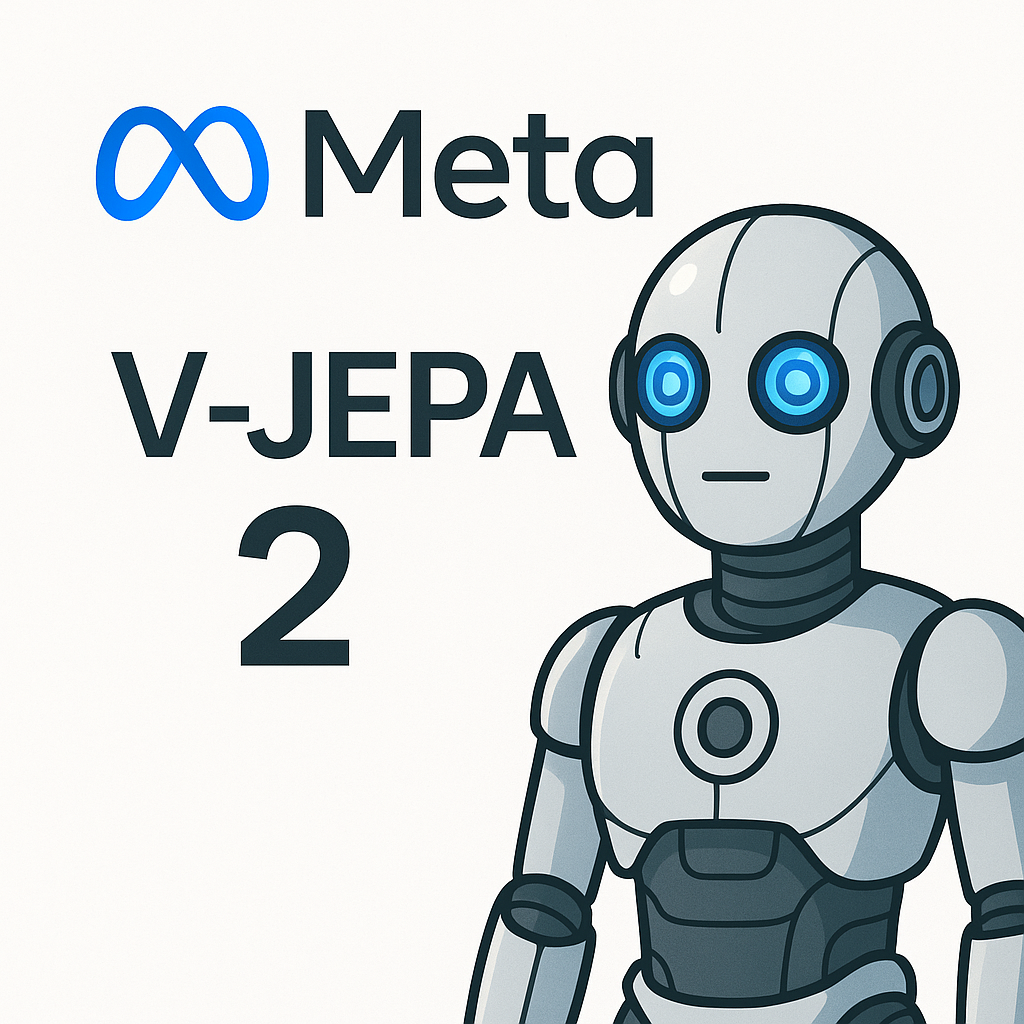
Image Credit: Medium
V-JEPA 2: How Meta’s New AI Model Teaches Robots Real-World “Common Sense”
- Meta has introduced V-JEPA 2, a new AI world model aiming to improve robotics and machine intelligence by enhancing real-world 'common sense.'
- AI historically struggled with physical intuition, excelling in text and image recognition but lacking in real-world application.
- V-JEPA 2, or Video Joint Embedding Predictive Architecture 2, is Meta's latest AI model geared towards enabling robots and AI agents to comprehend and predict real-world scenarios.
- Unlike previous models requiring extensive labeled robot data, V-JEPA 2 learns from vast amounts of internet video and can adapt to robot tasks with minimal additional training.
- The model aims to bridge the gap between AI perception and real-world action by enhancing common sense reasoning.
- V-JEPA 2's ability to learn from internet videos allows it to possess a broader understanding of real-world scenarios without the need for extensive manual labeling of data.
- This new AI model holds the promise of empowering robots and AI agents to not just see the world but also understand and predict events within it.
- V-JEPA 2's innovation lies in its capability to leverage internet video data for training, making it more versatile and adaptable in various robot tasks.
- The deployment of V-JEPA 2 represents a significant advancement in enabling AI to navigate and make sense of real-world situations, marking a shift towards bridging the gap between AI perception and real-world application.
- The implications of V-JEPA 2 extend beyond enhancing robotics and machine intelligence, as it holds the potential to revolutionize AI applications across various industries.
- The introduction of V-JEPA 2 signals a profound step forward in the evolution of AI capabilities, particularly in the realm of common sense reasoning and real-world adaptability.
Read Full Article
15 Likes
Unite
4w
169
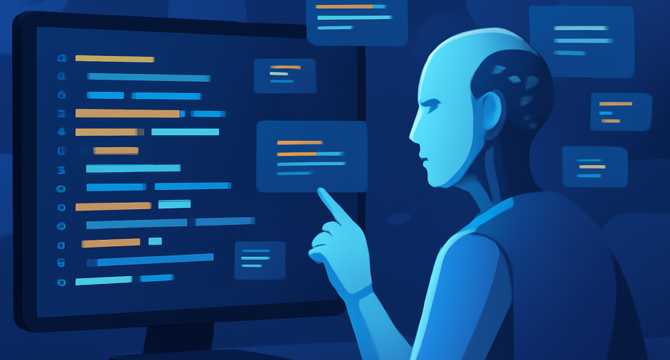
Image Credit: Unite
DeepCoder-14B: The Open-Source AI Model Enhancing Developer Productivity and Innovation
- DeepCoder-14B is an open-source AI model designed for code generation, offering transparency and accessibility to developers.
- Developed with 14 billion parameters, it employs advanced techniques like distributed Reinforcement Learning and iterative context lengthening.
- Trained on 24,000 coding problems, DeepCoder-14B achieves a Pass@1 accuracy of 60.6% on LiveCodeBench, rivaling larger models like OpenAI's o3-mini.
- The model excels in mathematical reasoning tasks and algorithmic challenges, showcasing its versatility and high performance.
- Open-source AI models, such as DeepCoder-14B, provide transparency and customization advantages over proprietary alternatives.
- DeepCoder-14B can assist developers in generating code snippets, debugging, handling large codebases, and supporting educational purposes.
- Challenges for DeepCoder-14B include limitations in solving specialized tasks, hardware requirements, training complexity, and legal considerations for generated code.
- Despite challenges, DeepCoder-14B remains a valuable tool for boosting productivity and innovation in software development, especially for independent developers and researchers.
- The model's integration of AI technology with open-source principles signifies a shift towards collaborative and accessible coding assistance.
- DeepCoder-14B underscores the importance of responsible use of AI tools to ensure code quality, security, and practical applicability in real-world scenarios.
Read Full Article
10 Likes
The Robot Report
4w
97

farm-ng updates Amiga robot software for small, midsize farms
- Farm-ng has updated its Amiga robot software stack to enhance user experience for small and midsize farms.
- The company aims to offer affordable, practical, and easy-to-use agricultural robotics systems.
- The Amiga robot is a modular, electric, open-architecture robot catering to small farms, research institutions, and developers.
- Updates include a streamlined UI, automated implement control in farming zones, improved hands-free navigation accuracy, and a Job Manager for operational efficiency.
- The new UI provides an intuitive dashboard for monitoring robot health, switching apps, and managing implements easily.
- The Job Manager allows users to plan, save, and repeat tasks within defined paths and zones, enhancing hands-free operations like seeding and spraying.
- All software functions are available as over-the-air updates for existing Amiga users, eliminating the need for additional hardware installations.
Read Full Article
5 Likes
Discover more
TechJuice
4w
196
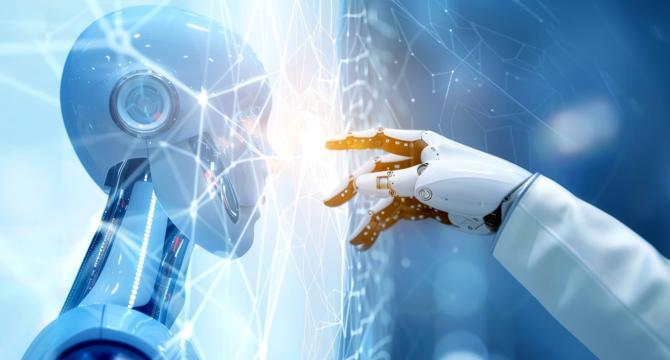
Image Credit: TechJuice
Robots Can Now “Feel”: Synthetic Skin Brings Touch to Machines
- Engineers have developed a synthetic skin for robots that allows them to sense touch, pressure, texture, and temperature.
- The synthetic skin contains ultra-thin, flexible sensors that mimic nerves, sending signals to the robot's system upon touch.
- Advances in materials science and neuromorphic computing enable the synthetic skin to provide real-time feedback for robots to adjust their actions.
- The technology enhances how robots interact with humans, making them safer and more capable in settings like elder care, physical therapy, and prosthetics.
- Robots in industries can use touch sensitivity to handle fragile items, check for defects, or work safely alongside people.
- The synthetic skin aids in safety by allowing robots to detect contact immediately, reducing accidents and building trust in busy environments.
- In surgeries, the touch sensitivity can help robotic tools feel tissue resistance, leading to more precise operations and less damage.
- The advancement aims to make robots more empathetic and human-aware for future tasks like personal assistance or emotional support.
- The synthetic skin innovation marks a significant progression towards creating safer, more helpful, and human-like robots that collaborate with humans.
Read Full Article
11 Likes
Medium
4w
264
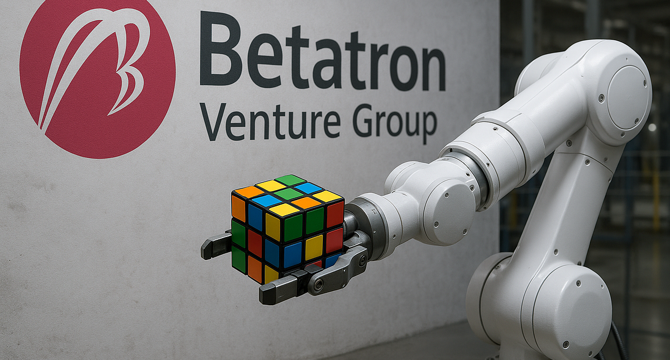
Image Credit: Medium
Robots Are Ready. So Are We.
- In 2024 and 2025, about half of iPhone final assembly still involves human labor, with only 10-30% of manufacturing operations using robots.
- The global robotics market, despite being small at $16.5 billion in 2025, is poised for growth due to economic and technological factors.
- Robots are becoming more affordable, with average industrial robot costs dropping from $50,000 in 2005 to $10,000-12,000 in 2025.
- Robots can be rented through Robots-as-a-Service, making them accessible even to small and medium-sized enterprises.
- The integration of robotics and AI is advancing rapidly, allowing for smarter robots with capabilities like movement and decision-making.
- The robotics industry is seeing increased interest globally, with a focus on both purchasing and manufacturing robots.
- VC fund Betatron is actively investing in robotics companies, particularly focusing on Collaborative Robots and Mobile Robots.
- Betatron's investment strategy prioritizes commercial viability and outcomes over deep tech or research.
- Technological advancements in AI, robotics, renewable energy, and battery storage offer opportunities to decouple human progress from environmental degradation.
- The convergence of technologies can lead to waste reduction, decarbonization, improved living standards, and equitable access to education and healthcare.
- Robots and AI hold the potential to deliver global equity and sustainability with a reduced ecological footprint.
- The future foresees robots playing a significant role in advancing these technological innovations and fostering a more sustainable world.
Read Full Article
15 Likes
The Robot Report
4w
428

Welding project uses robotics to crunch 12 workhours into 45 minutes
- A welding project for fencing on a bridge utilized robotics and automation to reduce 10-hour manual tasks to 45 minutes.
- Properly Works collaborated with Seibel Modern to create a fully automated robotic work cell for welding tasks.
- The project achieved a 12-1 reduction in time and reduced touch-up work by 50% through automation.
- The AutomationDirect Productivity 3000 PLC coordinated the robotic work cell, ensuring precise positioning and safety measures.
- Special cases were accommodated through the PLC's programming, enabling variations in fence segments.
- The system addressed weld quality by using an automatic reamer and shielded cables for harsh EMI/RFI environments.
- The intuitive operator interface, built on the C-more HMI panel, allowed easy monitoring and control of the welding process.
- The client saw significant improvements in efficiency, with a single fence segment now taking only 45 minutes to produce.
- AutomationDirect was the preferred supplier for the project, providing necessary automation components for successful integration.
- The success of the project has led the client to consider further automation projects with Properly Works.
Read Full Article
25 Likes
The Robot Report
4w
160

SCHURTER releases UHP high-current SMD fuse for humanoids
- SCHURTER has released a UHP high-current SMD fuse designed specifically for humanoid robots to address the need for high-performance components in compact formats.
- The UHP fuse aims to protect battery systems and power electronics in humanoid robots, offering reliability in demanding and space-constrained environments.
- It features a rated current up to 100A, breaking capacity of 2000A @ 80VDC or 3000A @ 63VDC, safe tripping in 15s at twice the rated current, and an operating temperature range of -55°C to +125°C.
- The UHP fuse is tailored for robotic platforms with high-density power architectures, ensuring safety and reliability for complex motion control and energy systems.
- Humanoid robots are increasingly using off-the-shelf components like the UHP fuse to meet the escalating demand for commercial deployments.
- Companies such as Hyundai Motor Group, GXO, Schaeffler AG, and Figure AI are deploying humanoid robots for various applications, highlighting the need for scalable manufacturing processes.
- Developers are exploring the scalability of humanoid manufacturing as demand grows, with component providers offering specialized solutions like the UHP fuse to facilitate mass production.
- The UHP fuse is UL-listed, RoHS-compliant, optimized for automated assembly, and available in tape-and-reel packaging through franchised distributors.
- The UHP fuse serves as a critical component for high-efficiency battery packs, DC/DC converters, and motor controllers, supporting the safe and long-term operation of humanoid robots in diverse environments.
- The evolving landscape of humanoid robotics industry emphasizes the importance of reliable components like the UHP fuse to ensure the functionality and performance of advanced robotic systems.
- Off-the-shelf components like the UHP fuse from SCHURTER are enabling manufacturers to streamline production processes and meet the demands of a growing market for humanoid robots.
Read Full Article
9 Likes
Medium
4w
196
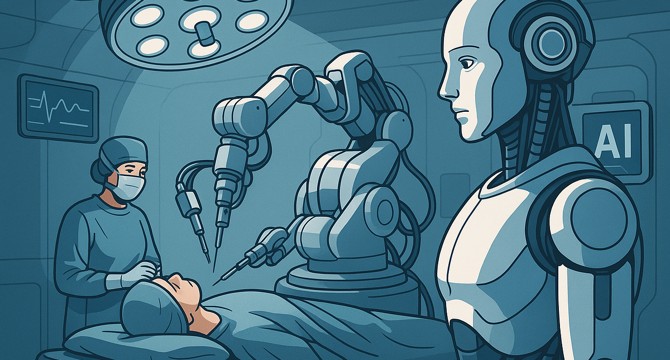
Image Credit: Medium
The Future is Here: AI-Driven Surgical Robotics are Revolutionizing Healthcare
- AI-driven surgical robotics are revolutionizing healthcare by combining artificial intelligence with robotic systems to assist surgeons in performing complex procedures with enhanced accuracy.
- Robotic systems like the Intuitive da Vinci offer real-time data analysis, improved vision, dexterity, and control to surgeons, making surgeries more efficient and precise.
- Benefits of AI-driven surgical robotics include enhanced precision, reduced errors, improved success rates, faster procedures, and easier minimally invasive surgeries for quicker patient recovery.
- Advancements in AI and robotics enable remote surgeries, surgical training through simulators, and the potential for pushing the boundaries of surgical innovation.
- Despite challenges like high costs and specialized training requirements, the future of surgery with AI-driven robotics shows great promise in providing better and safer procedures for patients.
- AI-driven surgical robotics represent a significant advancement in healthcare, offering personalized and efficient care through the utilization of cutting-edge technologies.
- The ongoing developments in AI and robotics herald a new era of innovation in surgery, promising exciting possibilities for the future of healthcare.
- The continuous evolution of AI in surgery signals the potential for groundbreaking innovations that could further transform healthcare practices.
- The integration of AI and robotic technologies in surgical procedures signifies a paradigm shift towards more effective and advanced patient care.
- The collaborative efforts of AI and robotics in the surgical setting open up opportunities for unprecedented advancements and improvements in healthcare standards.
- The emergence of AI-driven surgical robotics underscores the transformative potential of technology in redefining healthcare practices for better patient outcomes.
- As AI continues to play a pivotal role in surgical innovation, the horizon holds immense possibilities for further advancements and breakthroughs in healthcare.
- AI-driven surgical robotics showcase the transformative impact of technology on healthcare delivery, encouraging continued exploration and implementation of innovative solutions.
- Exciting times lie ahead in the realm of AI-driven surgical robotics, as advancements offer a glimpse into the promising future of healthcare with enhanced capabilities.
- The integration of AI in surgical robotics signifies a progressive shift towards optimizing patient care and surgical outcomes through advanced technological solutions.
Read Full Article
11 Likes
The Robot Report
4w
138

Sojo Industries raises $40M to scale mobile manufacturing lines
- Sojo Industries raises $40 million to scale its mobile manufacturing lines that focus on food and beverage products.
- The funding will be used to scale Sojo Flight deployments, enhance the Sojo Shield platform, and expand automation.
- Sojo Industries delivers advanced robotics, mobile manufacturing, and modular packaging solutions for the food and beverage industry.
- Their technology aims to meet the demand for high-speed, high-throughput, variety-pack production in a more efficient manner.
- Sojo's systems serve Fortune 500 companies and various sectors within the food and beverage industry.
- S2G Investments provided the financing for this round, emphasizing the need for innovative solutions in the supply chain.
- Sojo Flight offers mobile manufacturing lines that can be operational in one hour, enabling variety-pack production on-site for customers.
- The company's Sojo Shield platform provides real-time geolocation, analytics, and operational insights across the supply chain.
- Customers have saved over 5 million freight miles with impactful emissions savings and increased efficiency through Sojo's solutions.
Read Full Article
8 Likes
Unite
4w
17

Image Credit: Unite
6 New ChatGPT Projects Features You Need to Know
- OpenAI upgraded ChatGPT Projects with significant new features, enhancing productivity and organization.
- Voice Mode now enables discussing files and past chats with AI through voice commands, improving mobile workflows.
- Enhanced Memory feature allows AI to reference past conversations, creating continuity and more informed responses.
- Full Mobile Functionality lets users upload files, switch models, and utilize different AI models on the go.
- Surgical Sharing Controls enable sharing specific conversations without exposing entire project content.
- Expanded File Capacity allows for up to 20 documents per Project, with improved document processing and cross-referencing.
- Project-Level Custom Instructions offer specialized AI assistance tailored to specific tasks.
- Privacy Controls respect user data privacy preferences, with tiered settings based on user types.
- ChatGPT Projects evolves into persistent AI workspaces, integrating voice integration, contextual memory, and granular controls.
- The upgrades position Projects as essential tools for AI-assisted work, with future developments likely focusing on real-time collaboration and deeper integrations.
Read Full Article
1 Like
The Robot Report
4w
379

How robotics is changing the apparel industry
- Cam Myers, founder and CEO of CreateMe Technologies, discusses the use of robotics and adhesive technology in garment production on The Robot Report Podcast.
- The challenges of automating clothing manufacturing, benefits of adhesives over traditional sewing, and potential for reshoring production are highlighted.
- CreateMe Technologies focuses on sustainability and adapting to consumer demands in the apparel industry.
- Aldebaran, the maker of Pepper and Nao robots, filed for bankruptcy and laid off staff, impacting the robotics industry.
- The Congressional Robotics Caucus relaunched with a focus on elevating the priority of robotics in the U.S. industry.
- Amazon is developing AI software to train humanoid robots for package delivery, indicating further advancements in automation.
Read Full Article
22 Likes
The Robot Report
4w
433

Coco Robotics raises $80M to scale sidewalk delivery robots
- Coco Robotics raised $80 million in strategic funding to scale its sidewalk delivery robots, advance its AI platform, and grow enterprise partnerships.
- The CEO of Coco Robotics, Zach Rash, emphasized the importance of building technology and a business model based on current unit economics.
- Coco Robotics has completed over 500,000 zero-emission deliveries in major U.S. cities and Helsinki, expanding globally.
- The company plans to deploy thousands of vehicles by the end of 2025 to create sustainable last-mile logistics solutions.
- Partnerships with companies like Uber and DoorDash have helped Coco Robotics in scaling its autonomous delivery robots.
- Coco has expanded its partnership with DoorDash, enabling customers in Los Angeles and Chicago to access their fleet through the DoorDash app.
- Other companies like Starship Technologies, Serve Robotics, and Kiwibot are also working on automated last-mile delivery solutions.
- Starship Technologies and Serve Robotics have completed millions of deliveries, while Kiwibot focuses on the college campus market.
Read Full Article
26 Likes
Unite
4w
343

Image Credit: Unite
Beyond Drones and AI: Rethinking the Future of Humanitarian Demining
- The article discusses the use of drones in humanitarian demining efforts, focusing on automating the process to enhance safety and efficiency.
- Drones with AI are primarily useful in the non-technical survey stage, scanning large areas and collecting data to flag potential mine regions.
- However, the technical survey stage still relies on personnel with metal detectors, dogs, and machines to pinpoint exact mine locations.
- Challenges in demining include casualties, long timelines, high costs, and threats to civilians from mines/ERW.
- Current drone solutions struggle with detecting mines buried under soil or vegetation, especially non-metallic and old metal mines.
- Technical limitations, weather dependency, and high costs hinder the effectiveness of drone-based demining solutions.
- Research on ground-penetrating radar mounted on drones shows promise in precise mine detection with day/night capabilities and in various weather conditions.
- The use of radar technology coupled with AI can significantly improve accuracy, efficiency, and cost-effectiveness in demining operations.
- Exploration of advanced technologies like ground-penetrating radar stands as a crucial development for the future of humanitarian demining.
- The article provides insights into the challenges of current drone-based demining solutions and highlights innovative approaches for effective mine detection and clearance.
Read Full Article
20 Likes
For uninterrupted reading, download the app